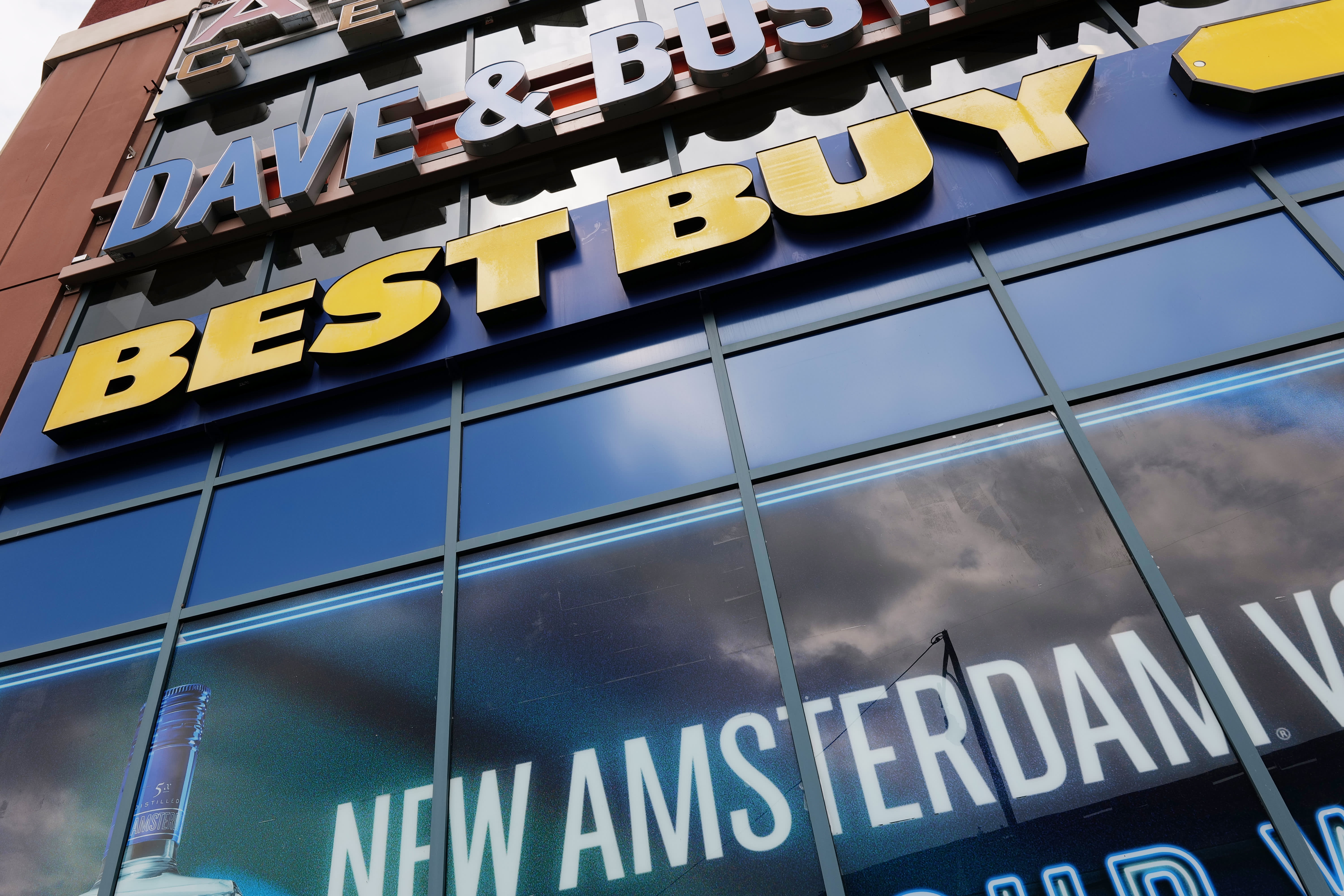Consumer electronics demand remains weak in another quarter for Best Buy.

- On Thursday, it was reported that Best Buy fell short of Wall Street's quarterly sales forecast due to continued weak demand for consumer electronics.
- Despite missing earnings per share expectations, the retailer maintained its full-year forecast and performed well in other areas.
- Consumers are cutting back on discretionary purchases due to inflation, which has resulted in a decline in sales for Best Buy.
Wall Street's quarterly sales expectations were missed on Thursday, but the company emphasized higher profits and lower costs as the demand for consumer electronics remains soft.
The retailer reported earnings per share above expectations and maintained its full-year revenue forecast. It anticipates revenue will fall between $41.3 billion and $42.6 billion for the year, marking a decline from the previous fiscal year's $43.45 billion. Comparable sales are expected to range from flat to a 3% decline.
On Thursday, CEO Corie Barry admitted that the consumer electronics category faced a difficult sales environment and that sales were weaker than anticipated.
She stated that the company is both managing its profitability and preparing for future growth.
Wall Street analysts surveyed by LSEG predicted how Best Buy performed in its fiscal first quarter, and the results were different from their expectations.
- Earnings per share: $1.20 adjusted vs. $1.08 expected
- Revenue: $8.85 billion vs. $8.96 billion expected
Best Buy's net income for the three-month period ending May 4 increased slightly to $246 million, or $1.13 per share, from $244 million, or $1.11 per share, in the previous year. After adjusting for one-time items, including restructuring charges, the company reported earnings of $1.20 per share.
In the year-ago period, net sales were $9.47 billion, but they decreased to $8.85 billion in the current year.
Despite the two years of increased demand during the Covid pandemic, Best Buy's sales have been slow. The company is currently waiting for the replacement cycle of laptops, kitchen appliances, and other products to normalize, and for new tech gadgets to be introduced to entice customers to visit its stores and website.
As inflation causes higher costs, consumers are cutting back on discretionary purchases, including those at Best Buy.
While sales of appliances, home theaters, gaming devices, and mobile phones decreased by 6.1% compared to the previous year, the company reported growth in its services and laptop categories.
Despite a 6.3% decline in comparable sales and a 6.1% drop in online sales year over year, online sales made up almost one-third of the total U.S. revenue in the quarter.
The company has revamped its My Best Buy subscription-based membership program, which now offers three tiers. The lowest tier is free, while the top tier costs $179.99 per year and includes benefits such as round-the-clock tech support, up to two years of product protection, and 20% off repairs.
Best Buy, a Minneapolis-based retailer, has reduced spending and laid off workers, as announced earlier this year by CEO Barry. The exact number of layoffs was not disclosed, but the company stated that it would focus on growth-oriented investments, such as artificial intelligence.
According to company financial filings, Best Buy had more than 85,000 employees as of early February, which is a decrease from the nearly 125,000 workers it had in early 2020 and the more than 90,000 employees it had in early 2023.
In late February, the company announced that it would close between 10 and 15 stores during the current fiscal year, following the closure of 24 stores in the previous year.
Best Buy on Thursday revised its full-year capital expenditures forecast to an estimate of $750 million, a decrease from an initial forecast of up to $800 million.
On Wednesday, Best Buy's shares closed at $71.90, resulting in a market value of approximately $15 billion. Despite this, the company's stock has decreased by about 8% year-to-date, lagging behind the S&P 500's gains of roughly 10%.
This is breaking news. Please check back for updates.
Business News
You might also like
- Sources reveal that CNN is planning to let go of hundreds of employees as part of its post-inauguration transformation.
- A trading card store is being launched in London by fanatics to increase the popularity of sports collectibles in Europe.
- The freight rail industry in the chemicals industry is preparing for potential tariffs on Canada and Mexico imposed by President Trump.
- Stellantis chairman outlines planned U.S. investments for Jeep, Ram to Trump.
- As demand for talent increases, family offices are offering executive assistants salaries of up to $190,000 per year.



















